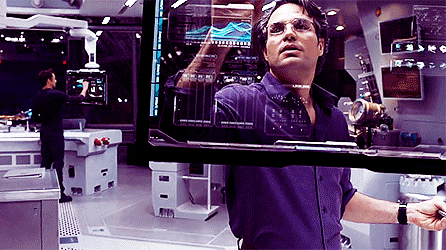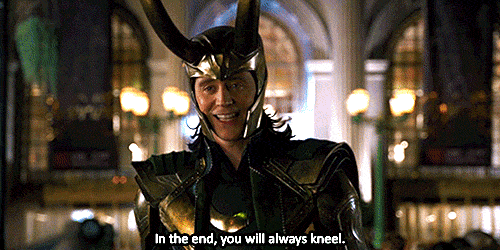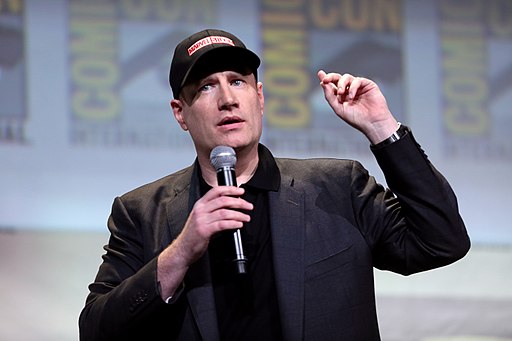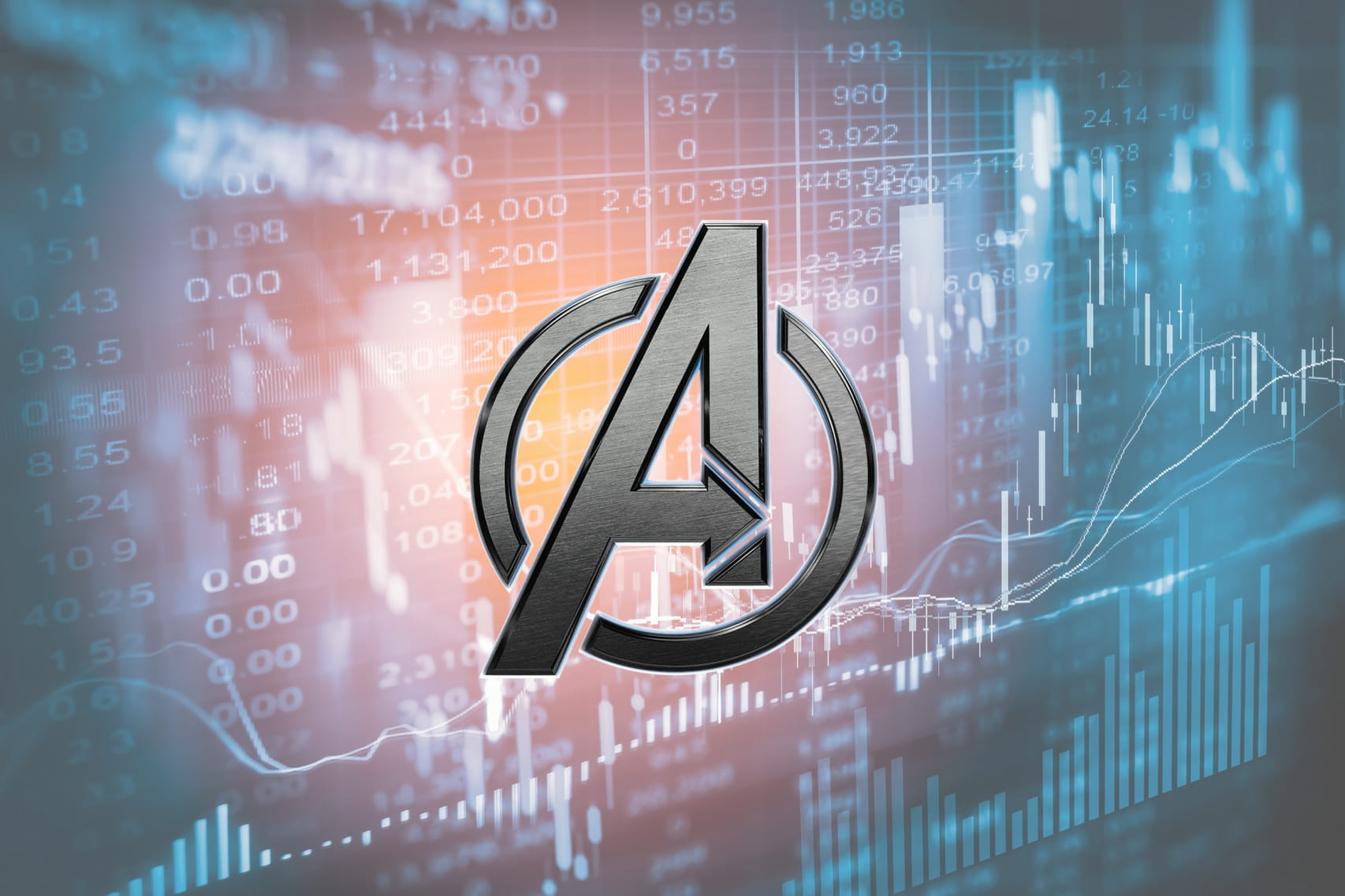Unless you’ve lived in a media blackout for the last 10 years, you’ve probably heard of the Marvel Cinematic Universe and the Avengers. What started off as just an idea to create an expanded universe via movies that would echo the serialized format of comic books has developed into a pop culture phenomenon.
18 movies and 10 years later, this idea will culminate in the release of Avengers: Infinity War on April 26, 2018. This much-anticipated movie is expected to break box office records and send the MCU fandom into a frenzy, if the response to the movie trailers is anything to go by. Their two official trailers have amassed a combined 227 million views on YouTube.
In celebration of this epic movie event, we thought it would be fun to transpose the world of the MCU onto the world of cryptocurrencies. So, here’s our completely subjective take on the Avengers, if they were cryptocurrencies.
Tony Stark/Iron Man: Bitcoin
Rewind to May 2, 2008. A new superhero was hitting the big screen. By no means was this movie the first of its kind; we’ve seen the likes of Superman, Batman, and Spider-Man before.
An Iron Man movie, not being as recognizable a name as the aforementioned superheroes, was a bit of a risk. There was little name recognition, and the audience would largely judge the movie on its own merits. Would the public respond well to what was arguably a second or even third-tier superhero?
It did, to the tune over US$580 million in box office receipts. And thus, the MCU was born.
 Oops. Just like us crypto-fans.
Oops. Just like us crypto-fans.
Much like Iron Man, Bitcoin, on hindsight, signalled a new era in digital currency. A whitepaper written in 2018 by an anonymous figure, Satoshi Nakamoto, detailed the mechanics of a new currency built on blockchain technology. By leveraging the advantages of blockchain – trustlessness, decentralization, and immutability – Bitcoin addressed the deficiencies in the digital money that came before it.
The elegant solution of marrying digital currency with blockchain caught the attention of early adopters who saw the potential power of such a solution. It took years for adoption to grow, but now Bitcoin is a market leader and an undeniably strong brand name in cryptocurrency and blockchain.
 BTC dominance currently stands at 38%, hollaaaaaa!
BTC dominance currently stands at 38%, hollaaaaaa!
It’s hard to imagine a cryptoworld without Bitcoin; in fact, today’s cryptoworld, with over $300 billion in value and more than 1,000 coins, arguably would not exist without Bitcoin paving the way. The same can be said about Iron Man and the MCU.
Steve Rogers/Captain America: Ethereum

3 years after the first Iron Man movie came Captain America: The First Avenger. In the intervening years, other MCU movies like Iron Man 2 and Thor were released but, looking back, the first Captain America movie was the next high-impact movie in the shared universe.
Afterall, Cap is billed as the First Avenger, and if we didn’t care about him, the first Avengers movie wouldn’t have worked as well as it did.
As Joshua Rivera of GQ Magazine put it, Captain America is the unlikely MVP of the MCU. Here’s a character rooted in the 1940s whose outlook and moral compass is arguably outdated in our current world, yet it is those very qualities that make him so appealing.
There’s something romantic and idealistic about Cap’s origins, which then becomes the basis of great cinematic tension in his later standalone movies The Winter Soldier and Civil War, where we see him grapple with the challenges of inhabiting our modern world.
His presence adds nuance and interest to the MCU world, as he is a character that (in the words of Rivera) “allows storytellers to raise all manner of interesting questions about who we were and who we are, and the ways our perception of ourselves clash with the reality of how we’re perceived.”
While Iron Man provides the flash (The tech! The quippy banter! The ego!), it can be said that Captain America provides a real-world substance that adds depth to the MCU. And that’s why Cap would be Ethereum.
 Steve got “upsized” thanks to the super serum; just like blockchain use cases got “upsized”, thanks to Ethereum!
Steve got “upsized” thanks to the super serum; just like blockchain use cases got “upsized”, thanks to Ethereum!
The brainchild of Vitalik Buterin, Ethereum came about because Buterin envisioned other use cases for blockchain beyond what Bitcoin is capable of. He released a whitepaper in 2013 that proposed the development of an alternative platform that would allow for the development of decentralized applications.
According to Buterin’s proposal, the Ethereum blockchain would have “a built-in fully fledged Turing-complete programming language that can be used to create “contracts”” – this led to the birth of the “smart contract,” self-enforcing code created on the blockchain that is the basis of many applications in the market today.
While Bitcoin made digital currency a credible idea, Ethereum pushed the boundaries of cryptocurrency with the concept of “smart contracts.” Here was a new way to harness the incredible power of blockchain that would have potential use cases in so many industries.
Ethereum introduced the idea of a blockchain platform that would host decentralized applications, and ultimately it led to the creation of similar projects such as NEO, Qtum, and Lisk.
 Choose wisely! #TeamCap #TeamETH
Choose wisely! #TeamCap #TeamETH
Like Bitcoin, it’s now inconceivable to think of cryptocurrency without thinking of Ethereum. Similarly, Cap is now such an integral part of the MCU that fans are bemoaning the speculation that he is likely to die in Infinity War. (Don’t do it, Marvel! Sobz.)
Thor: Stellar
Ah, Thor. The big, blonde, brawny one who formerly had a magic hammer (RIP Mjolnir!). In the grand scheme of the MCU, Thor is there to introduce the audience to the massive scale of the galaxy within these movies. Through Thor, we know of the Nine Realms, including his home Asgard, and we get a better sense of the vastness of the MCU world.
This knowledge that the shared universe involves more than just Earth (or Midgard, as it is known to the Asgardians) becomes more important as we delve deeper into the MCU. Afterall, our big bad in Infinity War, the one who has unified all the existing MCU characters in an epic bid to save the world, is Thanos – a powerful Titan warlord who rules in space and aims to collect all of the Infinity Stones.
 The Bifrost, which facilitates travel between realms. In my mind, this is what blockchain looks like.
The Bifrost, which facilitates travel between realms. In my mind, this is what blockchain looks like.
In this light, we can view Thor as the character that expands the storytelling in breadth and depth, and connects us, the audience, to the greater galaxy.
So why then is Thor akin to Stellar? Well, Stellar’s aim is to “connect people, payment systems, and banks” and “achieve a more inclusive digital economy.” With Stellar, multi-currency transactions are made more accessible and simple. While Bitcoin exists as an alternative currency, Stellar wants to connect and integrate with the existing infrastructure in our financial system.
Just as Thor acts as a link between Earth and the wider galaxy in the MCU, Stellar is potentially an important link between our current financial system and the emerging digital economy. Stellar could be the bridge that brings more businesses and people into the blockchain world.

It’s also a lovely coincidence that Stellar will have Lightning (Network) on its side come December 2018.
Bruce Banner/Hulk: Cardano
Do you remember 2008’s The Incredible Hulk? While it is technically canon in the MCU, it doesn’t really feel like a fully fledged part of the cinematic universe.
The role was (perhaps thankfully?) recast and Mark Ruffalo’s engaging turn as Bruce Banner/Hulk in The Avengers was enough to get movie-goers rooting for him. Together with Tony Stark, Banner become the other half of the “Science Bros” when both characters put their not-inconsiderable intellects together to try and figure out what the Tesseract was and what it was capable of.
The duality of the character, Banner’s smarts and the Hulk’s brawn, plus Ruffalo’s everyman quality, makes this character interesting and dynamic to watch.
 Science is cool! Bet the Science Bros are into crypto too…
Science is cool! Bet the Science Bros are into crypto too…
Banner’s intellectual prowess could equate to Cardano in the cryptoworld. Out of all the blockchain projects that exist today, Cardano has the distinction of being one that is driven by a scientific philosophy and a research-first approach.
With a team populated with leading academics and engineers, Cardano aims to create a decentralized platform for financial payments that balances both the needs of users and regulators.
Of course, Cardano isn’t the only project operating in the digital finance space, but their academic rigor could set them apart from their competitors. The Cardano blockchain boasts its own Proof-of-Stake algorithm, Ouroboros, which has its own scientifically-proven proof of security.

The project is still currently in its bootstrap phase, but if it does succeed at its goals, Cardano could be a massive force to be reckoned with, just like the Hulk.
Natasha Romanoff/Black Widow: Monero

She may be a mere mortal compared to the other super-powered humans in the Avengers, but she still packs a punch. A product of the Soviet era, the Black Widow relies on her wits and skills to kick ass. She’s the classic super-spy, accomplishing her mission goals without the enemy even knowing she was there.
Naturally, her counterpart in the cryptoworld would be a privacy coin. And our choice is Monero, arguably the most well-known privacy coin in today’s market, with a current market cap of over $4 billion.
Privacy coins often get a bad rep, as most people tend to associate them with shady use cases. But the reality is that the ability to conduct private transactions is important. On public blockchains, details of any and all transactions are available if anyone cares to check.
The question is: do we, as users, want all our transactions to be broadcast publicly? Privacy coins thus fill this need for anonymous transactions.
 Bucky, taking the hits just like our crypto portfolios in Q1 2018…
Bucky, taking the hits just like our crypto portfolios in Q1 2018…
Monero currently leads the pack of privacy coins, thanks to its features such as Ring Signatures, Ring Confidential Transactions, and stealth addresses. Like Black Widow, Monero handles “business” without broadcasting who, what, or why; it just gets the job done. It flies under the radar, but its supporters are fully on board with its stated goals.
Clint Barton/Hawkeye: Dash
Similar to Black Widow, we only get glimpses of Hawkeye’s backstory. We know him as a special agent for S.H.I.E.L.D. who has deadly aim with his arrows. His characterization takes an interesting turn in Avengers: Age of Ultron when we are introduced to his family and home life. He retires from the Avengers at the end of that movie, only to return at the behest of Cap in Civil War.
 If only we had the same accuracy when picking moonshot crypto projects to invest in!
If only we had the same accuracy when picking moonshot crypto projects to invest in!
If Hawkeye were a cryptocurrency, he’d be Dash. Originally a privacy-focused coin, Dash has pivoted to concentrate on facilitating payments and encouraging mainstream adoption of crypto by aiming to be, essentially, a better version of Bitcoin.
For instance, unlike Bitcoin, the Dash network relies on masternodes which allow for faster transaction times and features such as PrivateSend and InstantSend.

Dash has its fair share of support, with a current market cap of over $3 billion. Yet development delays on the road to their Evolution mainnet goals have plagued the team. Just like how Hawkeye’s conspicuous absence in the Infinity War trailers have raised questions about his role in the movie (if any!), it remains to be seen if Dash will pick up momentum. But we’re rooting for them both to run the race!
Honorable Mentions
It’s been reported that Infinity War clocks in at 2h 29min, and even with that much runtime, fans are still somewhat worried about how the Russo brothers have balanced the storylines and characterizations of all our beloved MCU characters. (But in the Russos, we trust!)
Just like a movie, we too are restricted – this article would be 3 or 4 times longer if we tried to discuss each MCU character! Hence, we’ve only covered the original group of Avengers.
That said, some correlations are perhaps too apt to ignore, so here are a few honorable mentions.
Loki: Ripple

As everyone’s favorite MCU villain, it seems only fitting that Loki would be Ripple. Like Loki, Ripple seems to have its own dedicated fanbase while simultaneously dealing with criticisms over its philosophy and centralized nature compared to other similar projects.
Such criticisms haven’t detracted from Ripple’s success; it maintains a strong hold in the market as the 3rd-largest cryptocurrency behind Bitcoin and Ethereum. With a growing number of partnerships and institutional backers, it seems like Ripple is here to stay.
And just like Loki’s contentious relationship with Thor, it’s interesting to watch the dynamics of Ripple vs Stellar Lumens.
Thanos: Governments
 Nooooo, don’t hurt
Nooooo, don’t hurt Bitcoin Tony!!!
If the Avengers were cryptocurrencies, then naturally their greatest enemy would be governments under the guise of Thanos. Sure, the rise in crypto adoption and the bull run in December 2017 to January 2018 were encouraging signs for early adopters, but as the market grew so did scrutiny from governments worldwide.
The FUD arising from government scrutiny is arguably one of the biggest factors affecting the growth of the cryptocurrency space today. Will governments rule against crypto use and stifle adoption? Will stricter regulations stop the inflow of money even to credible blockchain projects?
That said, some believe that cryptocurrency will only grow from strength to strength with greater government oversight. Scam ICOs and projects that lack credibility and actual real-world use cases will wither under the gimlet eye of the authorities, leaving only solid projects that can truly leverage the benefits of blockchain to enrich our lives.
Also, not a spoiler, but let’s be real: we don’t know how it will play out, but we can be fairly certain that the Avengers will beat Thanos. We should brace ourselves for some possible character death, but the good guys will prevail.
Bucky Barnes/Winter Soldier: NEO and Sam Wilson/Falcon: EOS

If Cap is Ethereum, then his trusty comrades, the Winter Soldier and Falcon, would be the other top 2 platforms in the market: NEO and EOS. Both are possible contenders as “Ethereum killers,” and could take the lead to become the leading blockchain platform, depending on how each of them develops their ecosystem and partnerships in the near future.
In the MCU fandom, speculation is rife on who could take over as Captain America should Steve Rogers die in Infinity War. There is precedence in the comic books for either the Winter Soldier or Falcon to don the iconic shield, but for now most of us are hoping that all 3 characters make it through the battle with Thanos.
Kevin Feige (President of Marvel Studios): Satoshi Nakamoto
Satoshi Nakamoto, in developing Bitcoin, was bringing the idea of a peer-to-peer digital currency powered by digital signatures to reality. Instead of a trust-based system, he envisioned one rooted in cryptographic proof which would remove the need for an intermediary.
While the Bitcoin whitepaper and initial code were well-received by experts in the field, it took some time for the project to gain more interest and attention. It was in 2011–2012 that Bitcoin started to achieve wider adoption, and it has only gained more and more momentum since then.
As crypto enthusiasts, we believe that the key tenets of blockchain and its applications will change the world – it’s just a matter of when and how.

Driven by a vision of doing something that hasn’t been done before with comic book movies, Kevin Feige is indubitably the Satoshi Nakamoto of the MCU.
As Vanity Fair put it:
Feige’s innovative, comic-book-based approach to blockbuster moviemaking — having heroes from one film bleed into the next — has changed not only the way movies are made but also pop culture at large.
Similar to Bitcoin, 2012 was arguably a milestone year for Feige. It was the release of the first Avengers movie in May 2012 – 4 years after that first Iron Man movie – that heralded Feige’s success as the creative head of Marvel Studios. Throughout the Phase 1 movies of the MCU, the seeds for these heroes to come together were being sown, yet the success of the shared universe wasn’t a sure thing.
Yes, the image of our Avengers Assembling was a potent one (if you didn’t feel your heart swell during that scene when the camera circles around the Avengers in a half-destroyed New York City, you’re dead inside), but Feige didn’t squander the opportunity; the movie lived up to the hype.
Belief in an overarching vision, a strong creative team, and a solid grasp of character and storytelling have been key factors in the success of Marvel Studios. And without Feige, the MCU as we know it today wouldn’t exist.
Final Thoughts
As anticipated and exciting Infinity War and its yet-unnamed sequel are, what’s even more thrilling is that Marvel Studios isn’t anywhere near done. They have a slate of movies planned until 2022, so although this first era of the Avengers seems to be coming to a close, there’s still more to look forward to.
Blockchain and cryptocurrency are in the same boat. We’ve seen the market grow exponentially in the last 2 years, and even in the bear market in Q1 2018, a sense of discovery and excitement still permeated the space as projects launched, progressed and steadily implemented their goals.
Regardless of its ups and downs (and it’s a rollercoaster, for sure!), there seems little doubt that we’re only at the beginning of the blockchain revolution.
We know we missed out many MCU characters, so which crypto would your fave Avenger be? Share with us in the comments!
(PS: If you’re reading this after Infinity War is out, remember #ThanosDemandsYourSilence!)
*GIFs were sourced from Tumblr and GIPHY; thanks fellow Marvel fans!

